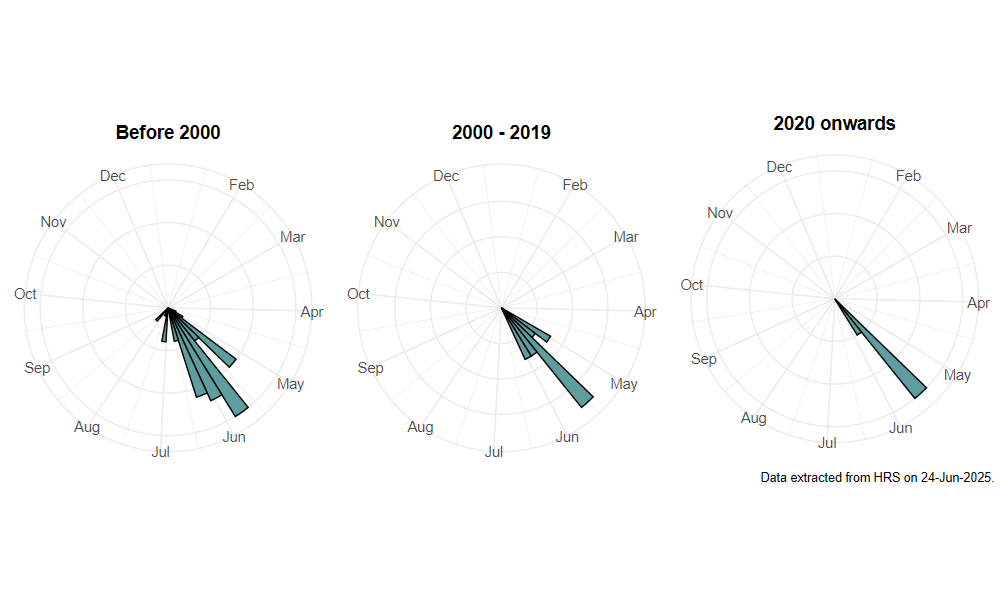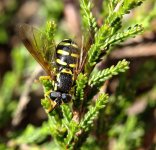Chrysotoxum vernale Loew, 1841
Identification
Identification difficulty = 4. ![]()
![]() according to Ball & Morris, 20241
according to Ball & Morris, 20241
Biology
Available records suggest that this species occurs across a range of habitats, from heathland to woodland clearings and perhaps even reed beds. The larva is thought to be associated with ant-tended root aphids. Nothing is known of its actual ant associate and to date no breeding site has been confirmed with certainty. Adults have been reported visiting Wood Spurge Euphorbia amygdaloides.
Flight period
The following plots show the number of unique records per week excluding those reported to be of immature stages.

Status
ENDANGERED - Ball & Morris, 20142. Endangered (RDB1) - Falk, 19913 and Shirt, 19874.
Distribution
All modern records are confined to Dorset and Hampshire where it appears to be restricted to a narrow coastal belt. There are also 19th Century records from Cornwall (G.H. Verrall) and Devon (J.W. Yerbury). There are numerous records from the Channel Islands, suggesting that C. vernale is close to the edge of its European range.

-
Ball, S., & Morris, R. (2024). Hoverflies of Britain and Ireland. WILDGuides (3rd ed.). Oxford: Princeton University Press. ↩
-
Ball, S., & Morris, R. (2014). A review of the scarce and threatened flies of Great Britain. Part 6: Syrphidae. ( No. 9). Species status (pp. 1–130). Peterborough: JNCC. ↩
-
Falk, S. (1991). A review of the scarce and threatened flies of Great Britain. ( No. 39). Research and Survey in Nature Conservation (pp. 1–194). Peterborough: NCC. ↩
-
Shirt, D. (Ed.). (1987). Red Data Books: 2. Insects. Peterborough: NCC. ↩
